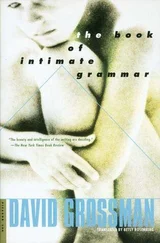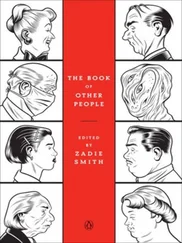3. THE LITERARY GARRET OF EDMOND DE GONCOURT (1885–96)
Edmond and his brother Jules were French novelists. Both are best remembered for the detailed journals they kept on literary people of the late nineteenth-century. Jules died in 1870, and in 1885 Edmond turned the two attic rooms of the house into a salon. Each Sunday afternoon, he would entertain such notables as Guy de Maupassant and Émile Zola. The following are some excerpts from Edmond’s journal on those afternoons.
February 1, 1885 On the French poet Robert de Montesquieu-Fezenac: ‘Somebody described his first love affair with a female ventriloquist who, while [he] was straining to achieve his climax, would imitate the drunken voice of a pimp.’
May 24, 1885 Edmond comments on Zola’s reaction to the recent death of Victor Hugo: ‘He walked around the room as if relieved by his death and as if convinced he was going to inherit the literary papacy.’
April 19, 1896 A description of the removal of Paul Verlaine’s death mask: ‘The conversation turned to Verlaine’s alcoholism and the softening effect it had had on his flesh… [Stéphane] Mallarmé had said he would never forget the wet, soggy sound made by the removal of the death mask from his face, an operation in which his beard and mouth had come away too.’
4. MARCONI INVENTS THE WIRELESS TELEGRAPH (1894–96)
Guglielmo Marconi was 20 years old when he began experimenting in earnest with radio waves. Because his father took a dim view of such ‘childish’ pursuits as physics and even went so far as to destroy his son’s electronic equipment, young Marconi had to set up a secret laboratory in the attic of their villa in Bologna. There, among his mother’s trays of silkworms, Marconi determined that radio waves could carry a message in Morse code across the room. In time, he proved that the effectiveness of his invention was not bound by the four attic walls, but that it could transmit messages over great distances.
5. THE CONSTRUCTION AND DEMONSTRATION OF THE FIRST TELEVISION (1922–26)
In 1922, British scientist John Logie Baird rented an attic room above an artificial-flower shop at 8 Queen’s Arcade in Hastings to continue research on his primitive television sets. He used a tea chest as the base for his motor, a biscuit tin to house the projection lamp, and he held the whole contraption together with darning needles, scraps of wood, string and sealing wax. In 1924, he took his ‘working’ apparatus to London. There he rented two attic rooms at 22 Frith Street in Soho. He struggled for another two years before he gave the first demonstration of true television on January 26, 1926, for an audience of 50 scientists. The British Broadcasting Corporation inaugurated Baird’s system in 1929 and used it until 1935, when a more sophisticated system was adopted.
6. ADOLF HITLER’S ATTEMPTED SUICIDE (1923)
After the failure of his Beer Hall Putsch in Munich, Germany, Hitler hid in an attic bedroom at Uffing, the country estate of his follower Ernst ‘Putzi’ Hanfstängl. Hitler tried to commit suicide by shooting himself when the police came to arrest him. A police agent managed to disarm him before he could pull the trigger.
7. ESPIONAGE AT PEARL HARBOR, HAWAII (1939–41)
Ruth Kühn was only 17 years old when she became the mistress of Nazi leader Joseph Goebbels. But like all of his mistresses, Ruth was soon discarded. When the affair ended in 1939, Goebbels decided to send Ruth out of Germany. He arranged for her and her parents, Bernard and Friedel, to move to Hawaii and act as espionage agents for the Japanese. Ruth set up a beauty parlour in Honolulu, which became her chief source of information, since it was frequented by American military men’s wives. The next step was to figure out a way of transmitting this information to the Japanese. The Kühns devised a simple code system and sent signals from the attic window of their small house overlooking Pearl Harbor. On December 7, 1941, towards the end of the Japanese surprise attack, their signals were noticed by two American naval officers. The US Navy Shore Patrol arrested the family and all were imprisoned for espionage.
8. ANNE FRANK WRITES HER DIARY (1942–44)
Forced into hiding when the Nazis overran the Netherlands, Anne Frank, her parents and sister, and four other Jews, shared a musty Amsterdam attic above a warehouse and office building. They hid there for two years, obtaining food and other necessities from Gentiles on the floor below. Anne, a precocious girl in her early teens, kept a diary in which she chronicled not only the details of their imprisonment, but also her personal feelings about life, love, the future, and her budding sexual awareness. Finally, in August 1944, the Gestapo, acting on a tip by Dutch informers, raided the hiding place. All the Franks died in concentration camps (Anne of typhus), except Otto Frank, the father. He returned to the attic after the war and found his daughter’s diary, which was first published under the title The Diary of a Young Girl .
9. THE DISCOVERY OF FRANZ SCHUBERT’S LOST PIANO SCORE (1969)
The score for a fantasy for piano by Franz Schubert was discovered in an attic in Knittlefield, Austria, in 1969. The piece is believed to have been written by the Viennese composer in 1817.
10. THE DISCOVERY OF FRÉDÉRIC CHOPIN’S LOST WALTZES (1978)
Several waltzes dedicated to Clementine de la Panouse were discovered by Vicomte Paul de la Panouse in the attic of the family château near Paris in 1978. The waltzes were stored in a heavy trunk belonging to the French aristocratic family. The waltzes were hidden — along with many other documents — in various locations prior to the German invasion of France during WWII.
11. THE DISCOVERY OF SCHINDLER’S LIST (1998)
When a German couple found an old grey suitcase in a loft belonging to the husband’s late parents in Hildesheim, they didn’t think much about it, until they saw the name on the handle: O. Schindler. Inside were hundreds of documents, including a list of the names of Jewish labourers that factory owner Oskar Schindler gave the Nazis during World War II. By giving Jewish workers fake jobs and otherwise manipulating the system, Schindler saved 1,200 Jews from extermination. His story inspired Thomas Keneally’s novel Schindler’s Ark (1982) and the movie Schindler’s List (1993). The documents had apparently been stored in the loft by friends of Schindler and then forgotten. In 1999 the suitcase and its contents were donated to the Yad Vashem Holocaust Museum in Jerusalem.
– L.O. & M.J.T
27 THINGS THAT FELL FROM THE SKY
1. HAY
A great cloud of hay drifted over the town of Devizes in England at teatime on July 3, 1977. As soon as the cloud reached the centre of town, it all fell to earth in handful-size lumps. The sky was otherwise clear and cloudless, with a slight breeze. The temperature was 26°C.
2. GOLDEN RAIN
When yellow-coloured globules fell over suburban Sydney, Australia, in late 1971, the ministry for health blamed it on the excreta of bees, consisting mostly of undigested pollen. However, there were no reports of vast hordes of bees in the area and no explanation as to why they would choose to excrete en masse over Sydney.
3. BLACK EGGS
On May 5, 1786, after six months of drought, a strong east wind dropped a great quantity of black eggs on the city of Port-au-Prince, Haiti. Some of the eggs were preserved in water and hatched the next day. The beings inside shed several layers of skin and resembled tadpoles.
Читать дальше












